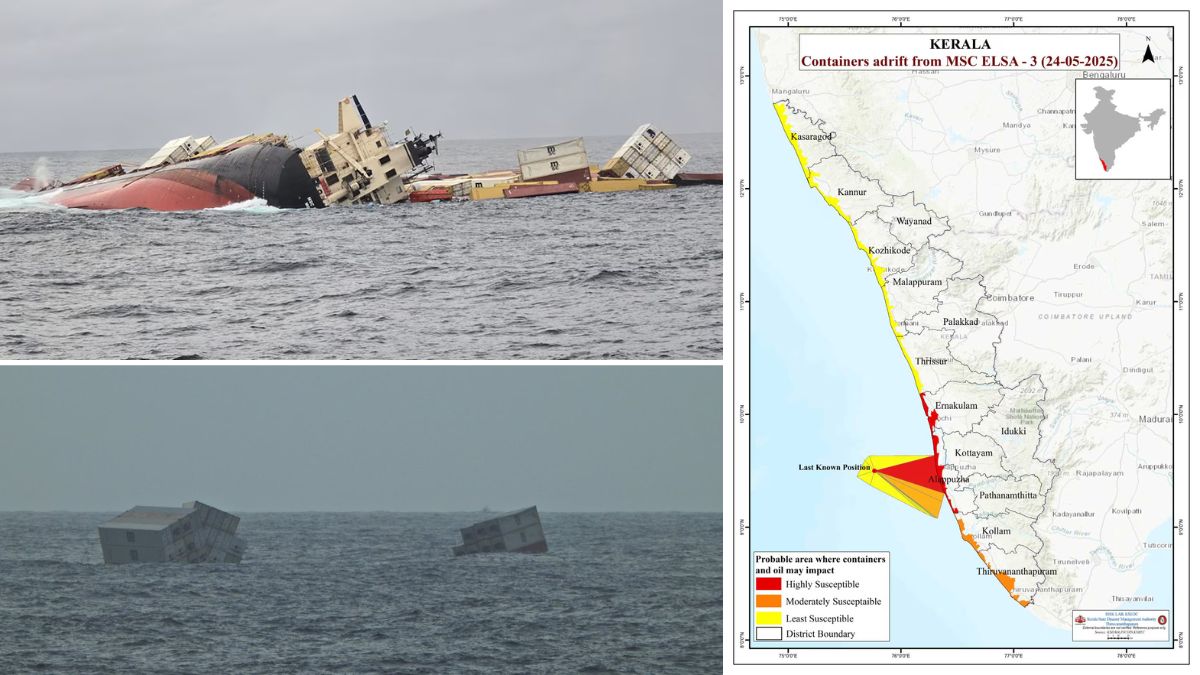Why in the News?
The sinking of the ELSA 3 ship off the Kerala coast in May led to a significant ecological disruption in the south-eastern Arabian Sea, a new study has confirmed.

About the Pollution and Contaminants:
- Oil Slick: Wreck of ELSA 3 released petroleum pollutants, initially forming a slick of about 2 square miles.
- Polyaromatic Hydrocarbons (PAHs): Compounds like naphthalene, fluorene, anthracene, phenanthrene, fluoranthene, pyrene detected; toxic, carcinogenic, and bioaccumulative.
- Naphthalene Marker: High levels confirmed continuous leakage from fuel tanks.
- Trace Metals: Nickel, lead, copper, vanadium found in elevated levels in water and sediments, worsening toxicity.
- Distribution: Oil spread shifted with sea turbulence—first mid-depth concentration, later visible on the surface.
Ecological Impacts of the Oil Spill:
- Plankton: Zooplankton showed pollutant accumulation, marking entry into the marine food chain.
- Fish Eggs & Larvae: Collected in the southwest monsoon spawning season displayed decay and mortality, threatening commercial species recruitment.
- Benthic Organisms: Sensitive species declined within days; only pollution-tolerant worms and bivalves survived, reflecting seabed stress.
- Higher Fauna: Brown Noddy seabird (Anous stolidus) recorded with oil-soaked plumage, highlighting risks to birds and larger marine life.
- Overall Effect: A multi-level disruption from plankton to fish stocks to seabirds.
Microbial Response and Bioremediation:
- Bacterial Diversity: Metagenomic studies found hydrocarbon-degrading bacteria near the wreck.
- Key Strains: Neptunomonas acidivorans, Halomonas tabrizica, Acinetobacter baumannii detected.
- Implications: Their presence reflects both severe contamination and natural bioremediation potential.
- Outlook: Microbial action may reduce pollution gradually, but contamination in the Arabian Sea remains significant.
| [UPSC 2017] In the context of solving pollution problems what is/are the advantage/disadvantages of bioremediation technique?
1. It is a technique for cleaning up pollution by enhancing the same biodegradation process that occurs in nature. 2. Any contaminant with heavy metals such as cadmium and lead can be readily and completely treated by bioremediation using microorganisms. 3. Genetic engineering can be used to create microorganisms specifically designed for bioremediation. Select the correct answer using the code given below: Options: (a) 1 only, (b) 2 and 3 only, (c) 1 and 3 only* (d) 1, 2 and 3 |
Get an IAS/IPS ranker as your 1: 1 personal mentor for UPSC 2024

